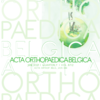Cementation of proximal femoral nails of the very elderly subject in per-trochanteric fractures
pertrochanteric fracture ; osteosynthesis ; surgery ; elderly
Published online: Sep 14 2021
Abstract
The management of pertrochanteric fractures (PTF) in the very elderly relies on early verticalisation to limit complications of the decubitus and this requires stable osteosynthesis allowing immediate full support without risk of mechanical failure. The aim of the study was to analyse the value of cementing the cervicocephalic blade during osteosynthesis with a proximal femoral nail.
A prospective bicentric comparative study was con- ducted. Patients over 90 years of age with PTF were included. Centre A used a PFNA (Proximal Femoral Nail Antirotation) nail without blade cementing and Centre B used the same nail with blade cementing. The primary endpoint was the occurrence of disassembly of the osteosynthesis requiring revision surgery. Secondary endpoints were functional out- come (resumption of walking), postoperative pain and duration of surgery.
Sixty-four patients were included in Centre A and 23 patients were included in Centre B. Mean age, gender, functional abilities before fracture, fracture type and tip-apex distance were comparable between the groups. Postoperative pain and duration of surgery did not show significant differences between the groups. Four patients operated on with an uncemented PFNA (6.25%) and one patient operated on with a cemented PFNA nail (4.35%) showed early dismantling. The rate of patients returning to walking was significantly higher in the cemented group (p=0.00005).
No significant differences in the rate of dismantling were observed between the two groups. However, the group operated on with a cemented PFNA showed better functional recovery with a significantly higher rate of walking recovery.
